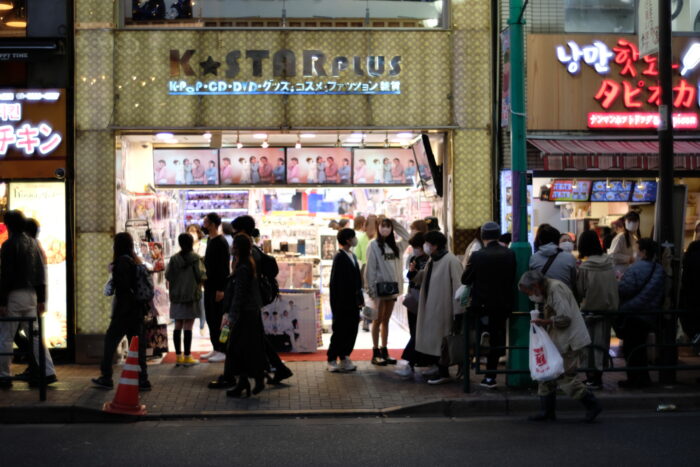When my parents married in 1964, they rent a small apartment (only one room of 10 square meter with kitchen and toilet, without bath) in Nishi-Okubo 4-chome where many small wooden houses and apartments were built after the WWII. Although they were not rich and had no TV, washing machine or fridge, they walked to Shinjuku on weekends and enjoyed movies and inexpensive meals. They lived a happy life in the town for two years until they moved to a large housing complex in a suburban area, where I was born. The entire town was razed and redeveloped into a large park in 1984.

Fujifilm X-Pro2 / Foigtlander NOKTON classic 35mm F1.4 II MC
An atmosphere of the old town remains in alleys crossing Okubo Street, the main road running in the east-west direction across Shin-Okubo Station.

Fujifilm X-Pro2 / Foigtlander NOKTON classic 35mm F1.4 II MC
Shin-Okubo is now known for the largest Korean town in Tokyo. Many Korean restaurants and Korean entertainment goods shops opened in the early 2000s when the FIFA 2002 World Cup Korea/Japan was held and a Korean TV drama boom emerged among middle aged women. After a K-POP boom arrived in 2010s, more and more young women gather in Shin-Okubo area.

Fujifilm X-Pro2 / Foigtlander NOKTON classic 35mm F1.4 II MC
Today, one-third of the residents in Shin-Okubo area are foreigners including Korean, Chinese, Vietnamese, Nepali, Myanmarese, etc. Shin-Okubo has become a multinational town and attracts various people including immigrants, tourists, consumers and old residents.

Fujifilm X-Pro2 / Foigtlander NOKTON classic 35mm F1.4 II MC
prev 13 Shinjuku / next 15 Takadanobaba
Return to Central Tokyo, North